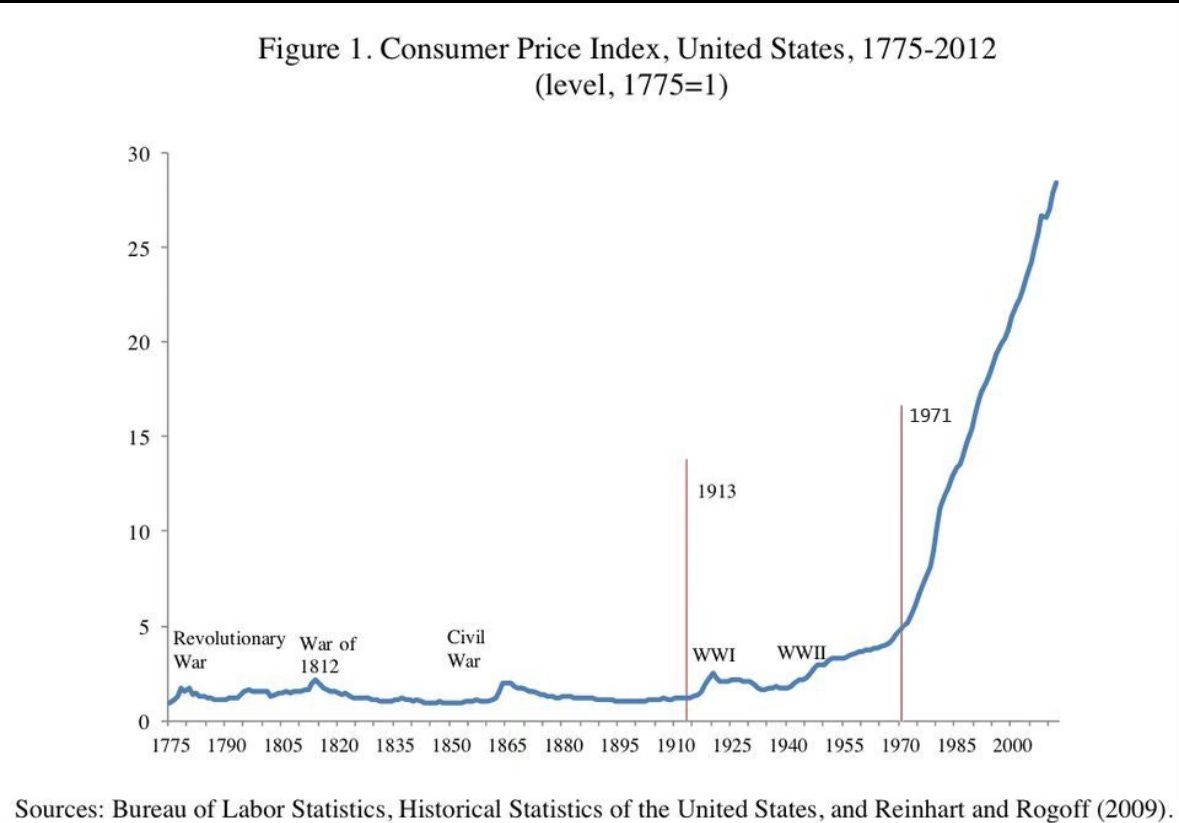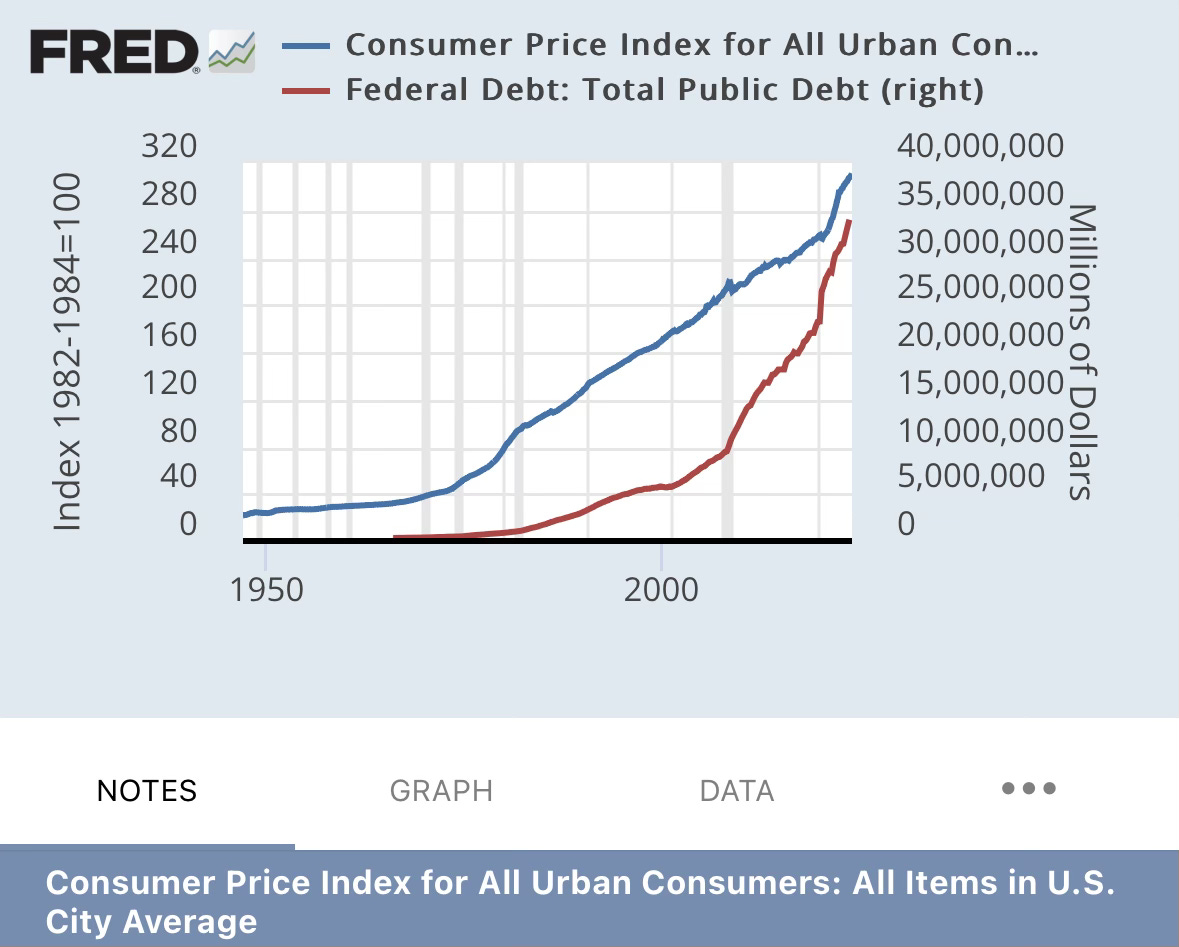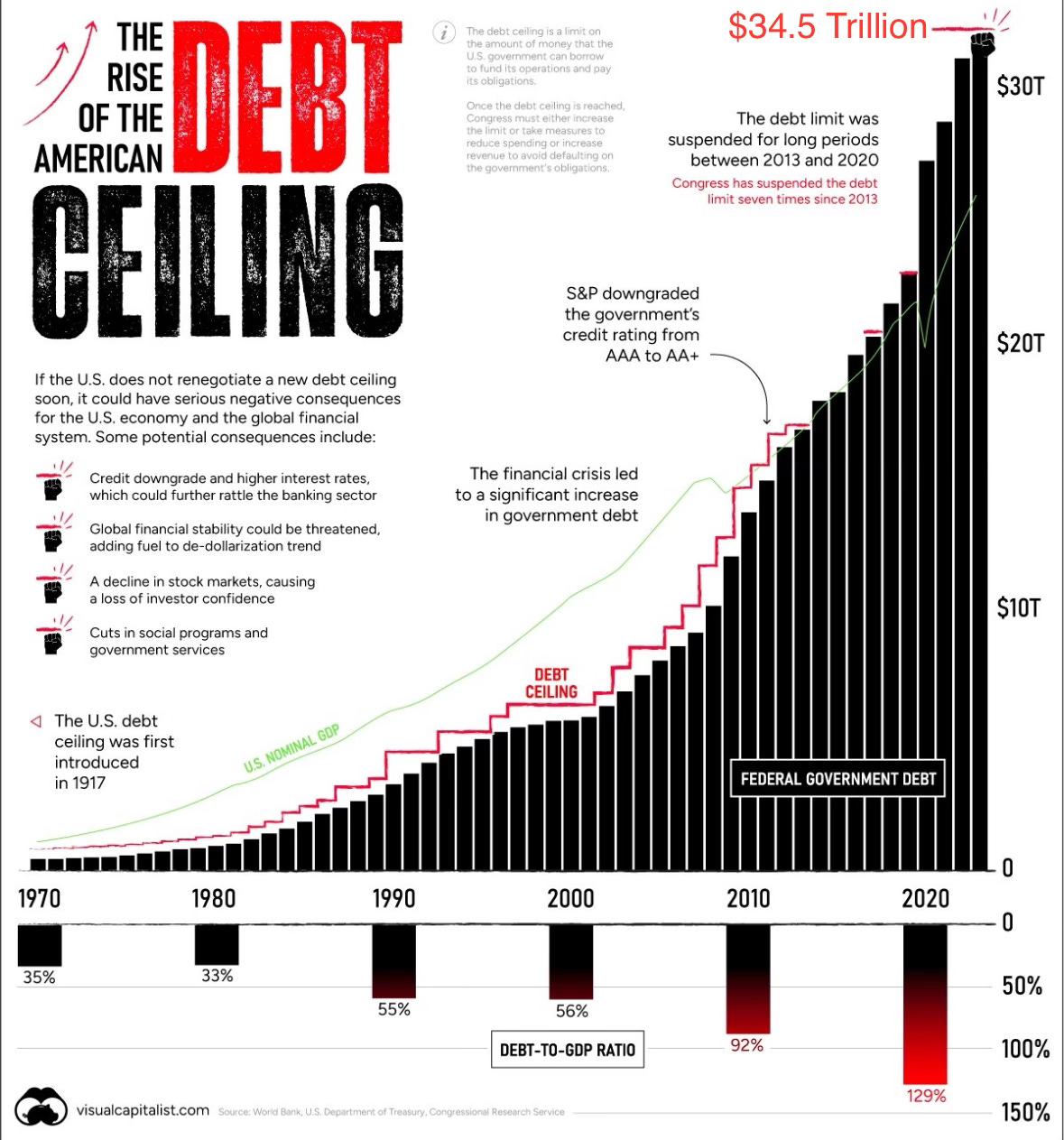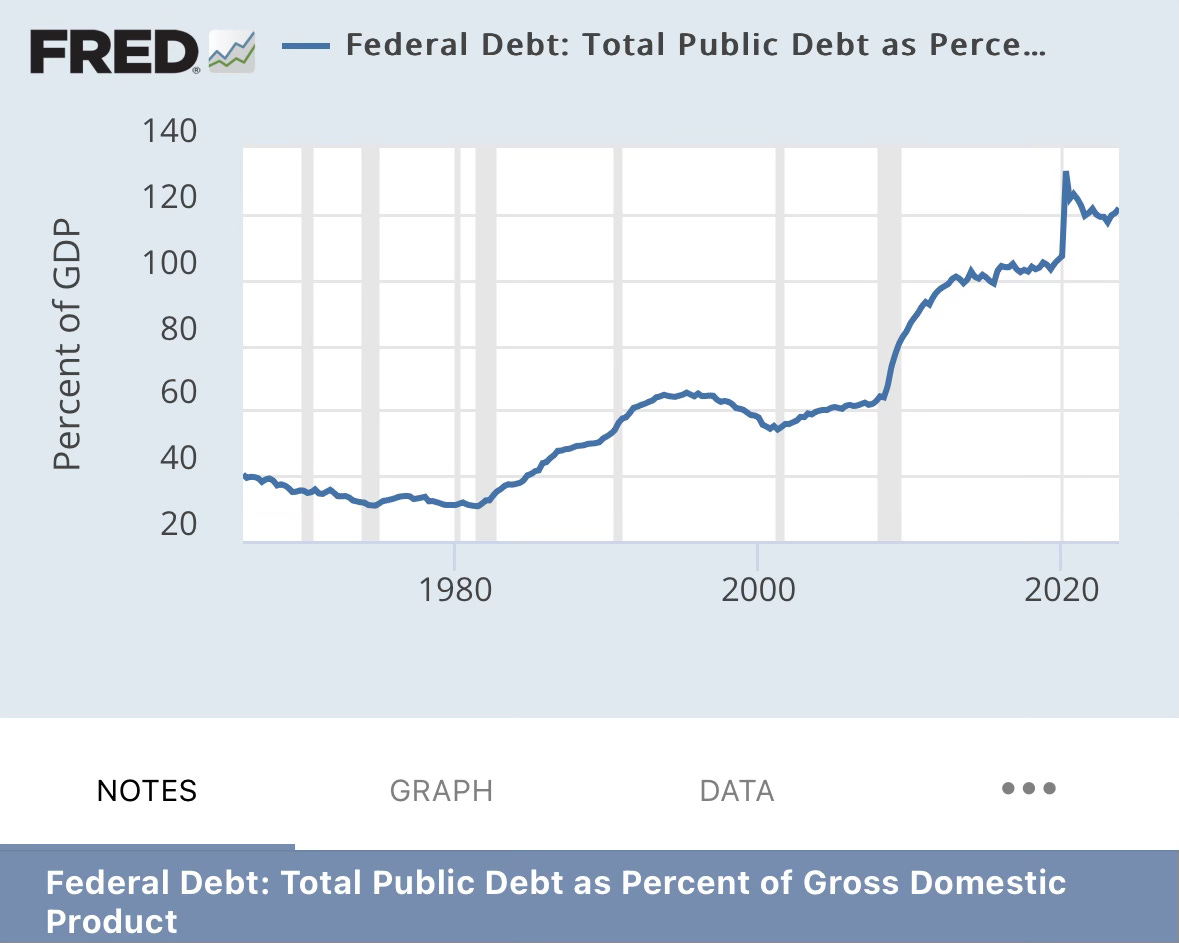Introduction: Unmasking the Devastating Impact of Inflation
Inflation, once a familiar economic concept, has morphed into a pervasive crisis that threatens to dismantle the very foundations of our society. The late Charlie Munger, a renowned investor that was partnered with Warren Buffett at Berkshire Hathaway, sounded the alarm on this issue, warning that unchecked inflation could lead to the downfall of democracies. He likened the situation to historical empires that crumbled under the weight of inflation, notably referencing the collapse of the Roman Empire. Munger's words resonate as a stark reminder of the grave threat posed by inflation, eclipsing even the specter of nuclear war.
(Video below of Charlie Munger Warning on Inflation)
The relentless surge in prices across goods and services has reverberated globally with the most recent Core CPI data coming in at 3.8% and total inflation since January 2021 of 20%, sparking concerns and uncertainties among the populace. This financial exposé dives into the heart of America's current inflation crisis, tracing its origins in history and dissecting the intricate interplay of monetary policies striving to navigate the escalating challenges posed by inflationary pressures.
Defining Inflation from the Past to Today
The original definition of inflation, rooted in monetary theory and prominently aligned with the quantity theory of money, initially centered on the expansion of the money supply or currency units. This definition underscores the intrinsic connection between monetary growth and escalating price levels (Federal Reserve Definition ). This fundamental notion has been pivotal in shaping arguments advocating anti-inflation policies within central banking institutions today. However, it's crucial to acknowledge that over time, the definition of inflation was changed, transcending its narrow monetary origins to encompass a more comprehensive assessment of its ramifications, price increases. This evolution begs a haunting question: why did the definition morph from a singular focus on money supply augmentation to encompass the ominous specter of price escalations?
Historical Context: Tracing the Evolution of Inflation and the US Dollar's Journey from a Gold Standard to Fiat Currency
The economic history of America resounds with cautionary wisdom passed down from its founding figures, who were keenly aware of the perils of inflation. The constitutional mandate, outlined in Article 10, to utilize gold and silver as money reflects the founding fathers' deep-seated concern for safeguarding against currency devaluation and uncontrolled money supply growth, lessons learned from the collapses of great empires such as the Roman Empire due to unchecked inflation.
Foreseeing the potential pitfalls, figures like Thomas Jefferson issued stark warnings about the dangers of unbridled money supply growth and currency devaluation. His words, "If the American people ever allow private banks to control the issue of their currency, first by inflation, then by deflation..," eerily ring true through history, highlighting the profound impact that mismanaged currency can have on a nation's prosperity and stability.
The emphasis on a stable currency within the constitution, alongside longstanding reservations regarding central banking and paper money, speaks to an era where fiscal prudence and financial responsibility were regarded as essential pillars for maintaining economic stability and safeguarding the nation's wealth for future generations.
Pre-Federal Reserve Stability: Before the establishment of the Federal Reserve in 1913, America experienced relatively stable prices and modest inflation rates. Federal Reserve archives reveal a modest annual inflation rate of a mere 0.4% during the pre-Fed era (1790-1913). This historical backdrop assumes paramount importance in gauging the tremors of inflation's impact and the undercurrents of economic stability across epochs (St. Louis Federal Reserve, 2017 Inflation Data ). The steadfast adherence to the gold standard provided a tether of discipline in monetary and fiscal policies by the government, restraining the rampant expansion of the money supply and the attendant inflationary onslaught.
Transition to Fiat Currency: The introduction of fiat currency with the Federal Reserve brought new challenges, including navigating inflation, interest rates, and financial stability. This transition led to unpredictable economic cycles, speculative bubbles, and inflationary challenges, challenging the notion of monetary flexibility and casting doubt on economic certainties.
Critical Moments for the US Dollar: During the 1960s, shifts in fiscal policy played a role in driving inflation rates upward, prompting President Nixon's pivotal choice to detach the US dollar from the gold standard in 1971. This pivotal decision set off a decade marked by soaring inflation, which steadily eroded the purchasing power of the US dollar. To counter these inflationary pressures, the Federal Reserve in 1980 took unprecedented action, implementing substantial interest rate hikes that had never been seen before in America, reaching levels close to 20%. These measures were essential in combating the rampant inflation that threatened the stability of the nation's economy.
Money Supply Increase and Inflation Dynamics: A Closer Look at Supply and Demand Principles
The Quantity Theory of Money, a cornerstone in economic analysis, establishes a direct link between the expansion of money supply and the phenomenon of inflation. This theory posits that an increase in the money supply, as evidenced by M2 data alongside considerations of total Federal Debt, can result in higher price levels due to the increased currency supply in circulation. This relationship underscores the critical importance of maintaining a balance between money supply growth and the production of goods and services in an economy.
A closer look at the M2 data, which encompasses various forms of money such as cash, checking and savings accounts, and short-term deposits, provides a comprehensive overview of the expansion in monetary liquidity. The surge in money availability, particularly evident in recent trends since 2020, serves as an early warning signal for potential inflationary pressures looming on the economic horizon.
While public discourse often focuses on the visible effects of inflation through rising prices, it is essential to recognize the underlying structural complexities that fuel this phenomenon. The disconnect between the rapid growth in money supply and the relatively stagnant growth in the production of goods and services is a key driver of inflationary forces. This disparity can lead to an imbalance in supply and demand dynamics, pushing prices upwards as the availability of goods and services decline.
Moreover, the intertwined dynamics of escalating national debt and expansive government spending further exacerbate economic fragility. The accumulation of debt adds to the overall money supply, contributing to inflationary pressures if not accompanied by corresponding increases in real economic output. This situation not only impacts economic stability but also gives rise to broader societal concerns regarding income inequality, financial security, and long-term economic sustainability.
Analyzing recent data trends, the surge in M2 money supply in the US post-2000, notably accelerated in 2020, reflects a substantial injection of liquidity. This surge, driven by governmental interventions like fiscal spending, coincided with a significant rise in national debt from $23.2 trillion in February 2020 to $34.5 trillion today, marking a 48% increase, while money supply rose by 40% from $15.4 trillion to $21.7 trillion. Inflation reported by the government in the same time span has been 21%.
However, this rapid expansion in money supply has not been met with a proportional increase in the production of goods and services. This imbalance aligns with basic supply and demand principles, underscoring inflationary pressures.
The Greatest Threat to Americas Society: The National Debt
In the early 2000s, the United States navigated through various crises like the 9/11 attacks, the 2008 financial downturn, and the recent COVID-19 pandemic. Interestingly, these crises coincided with Federal Reserve interest rate hikes followed by subsequent reduction of interest rates to zero percent. This policy response prompted significant government spending to mitigate short term economic challenges, resulting in sizable budget deficits and an escalating national debt. The trajectory of these events highlights the intricate interplay between government spending, debt dynamics, and their implications for inflation and currency devaluation.
During the early parts of 2000, the Debt to GDP ratio remained comparatively lower, around 55%, indicating that government spending was contained within a manageable proportion relative to the total economic output. This context allowed for a degree of flexibility in financing government activities without immediately triggering severe inflationary pressures or currency devaluation.
In stark contrast to the trends observed in the early 2000s, where the Debt-to-GDP ratio stood at around 60%, the ratio has now surged to an unprecedented 122% in 2024. This dramatic increase highlights the unsustainable expansion of government spending, exceeding the economy's capacity to manage such growth effectively. The persistent escalation of national debt, fueled by annual deficits reaching approximately $2 trillion today during what many consider a period of normal economic expansion, raises valid concerns about future fiscal challenges. This prompts the question: how much larger will the deficit swell when confronted with a genuine crisis in the future?
The Debt to GDP ratio reaching an unprecedented 122%, with the national debt standing at $34.5 trillion compared to a GDP of $25.5 trillion, is a significant indicator of economic strain. This surpassing of Debt to GDP signifies that the government's borrowing now surpasses the productive capacity of the entire economy. From a supply and demand perspective, this imbalance suggests that the demand for borrowing (government spending) exceeds the supply of economic output, leading to inflationary pressures.
One primary concern today is the limited options available to the government in addressing the mounting debt burden. One potential action is increasing taxes to boost revenue, but excessive taxation has the downside of potentially stifling economic growth. On the other hand, cutting spending is another option, but the largest categories of government spending—such as Social Security, Medicare, Defense, and other social programs—are often considered political suicide.
Implementing higher taxes or reducing government deficits could lead to reduced consumer spending, as individuals may have less disposable income to spend on goods and services. This reduction in consumer spending can have a negative impact on the economy in the short term, potentially slowing down economic growth and causing asset prices to deflate or even crash. But as shown during the late 1970’s early 1980’s can lead to economic prosperity.
This dilemma often pushes the government toward deficit spending or resorting to printing more money to bridge the gap between revenue and debt obligations. However, both of these measures come with risks, such as inflationary pressures and currency devaluation, which can further complicate the economic landscape and impact overall economic stability.
Inflation's Multi-Faceted Impact Beyond Rising Prices: A Societal Perspective
While most people associate inflation with higher prices, the broader and compounding effects of inflation on society are often overlooked. Examining the societal impacts from 1971, when the US detached the dollar from the gold standard, to the present day reveals a complex interplay between fiscal and monetary policies and their consequences on various segments of the population. The following are the specific society impacts that inflation is effecting on a large scale and rising just as fast as prices: retirees (baby boomers), todays middle class (jobs, income and more), education, and health.
(This comprehensive financial white paper extends exclusively to our valued paid subscribers, offering an exclusive breakdown of crucial economic data. Your support is invaluable in furthering our mission of delivering top-tier economic analysis to you. Thank you for your continued patronage, and we hope you find the remainder of the paper insightful and informative.)
Keep reading with a 7-day free trial
Subscribe to The Coastal Journal to keep reading this post and get 7 days of free access to the full post archives.









